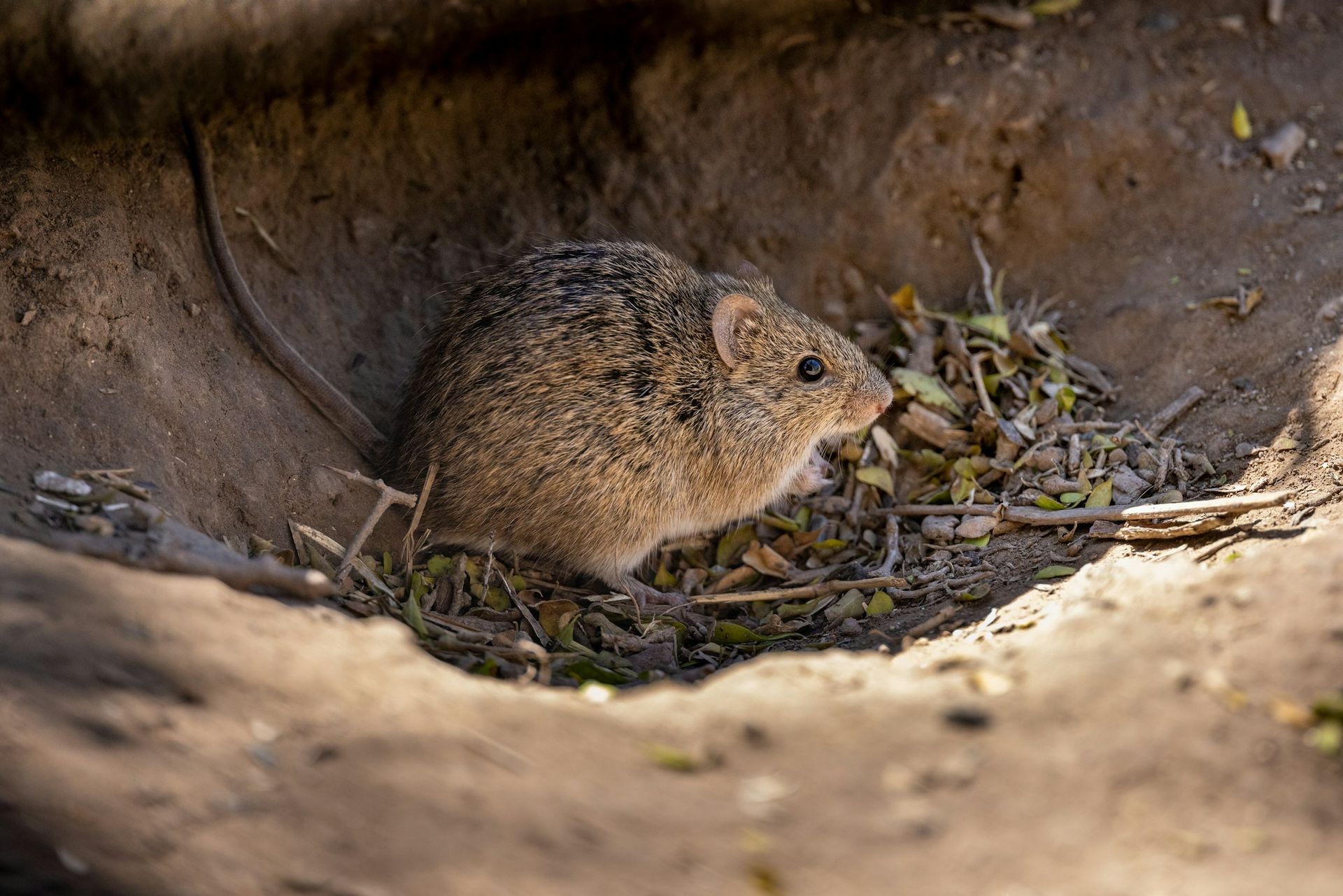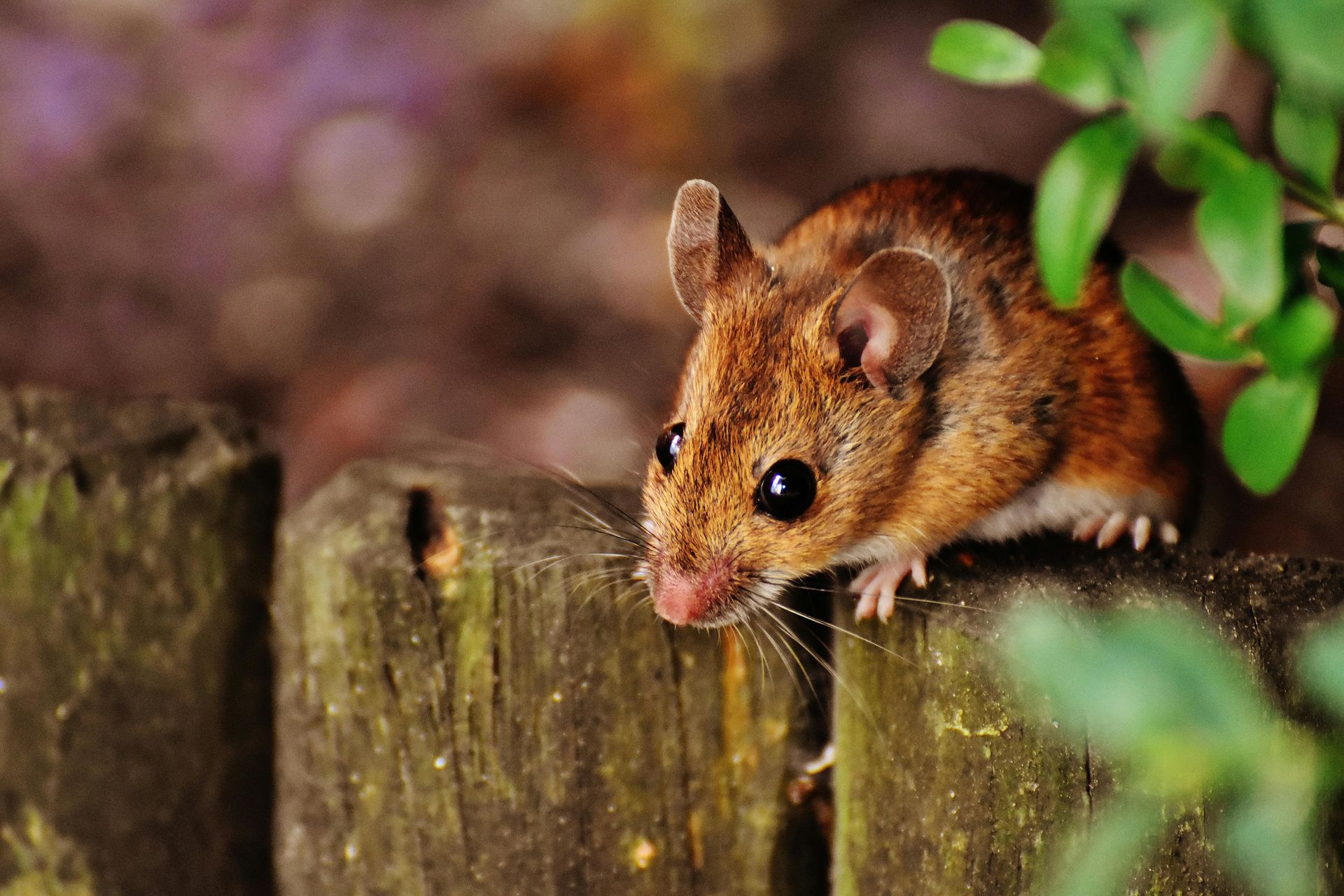Mice are small, adaptable rodents found in nearly every habitat around the world, from forests and grasslands to human homes and urban environments. Known for their rapid reproduction and survival skills, mice play an important role in ecosystems as both seed dispersers and prey for numerous predators.
Mice typically measure 2-4 inches in length, with tails that match or exceed their body length. Their fur varies from brown to gray, depending on the species. The Deer Mouse (Peromyscus maniculatus) and House Mouse (Mus musculus) are among the most common species in North America. Mice are omnivorous, feeding on seeds, fruits, insects, and human food scraps.
Highly social and nocturnal, mice are known for their agility and keen senses of smell and hearing. They build nests in hidden locations, such as burrows, tree hollows, or inside human structures. Female mice can give birth to up to 10 litters per year, each consisting of 5-12 young, making them highly prolific breeders.
Natural predators include owls, snakes, foxes, and domestic cats. Human-related threats such as habitat disturbance and poisoning also impact mouse populations. Despite being considered pests in some contexts, mice are crucial for maintaining ecological balance.

For your safety and the well-being of wildlife, please observe animals from a distance and avoid touching or disturbing them. If you encounter an animal that appears injured or in distress, contact a licensed wildlife rescue organization for guidance before intervening.
Found An Animal? Not sure how to help a wild animal in need? Learn when to step in, who to call, and how to help safely.
Did You Know?
- Mice can jump up to 12 inches vertically, allowing them to reach high places.
- The Deer Mouse is a skilled climber and often builds nests in trees.
- Mice can squeeze through openings as small as a quarter of an inch.
- House Mice have been living alongside humans for thousands of years.
- Mice are capable of learning and remembering complex mazes.
- Their whiskers help them navigate dark environments by detecting nearby objects.
- Mice communicate using high-frequency sounds that are inaudible to humans.
- Some species of mice store food for winter, creating hidden caches.
- Mice play an important role in scientific research, contributing to breakthroughs in genetics and medicine.
Problems Faced In The Wild
- Habitat Loss: Urban development reduces natural habitats and food sources.
- Predation: Mice are a primary food source for many predators.
- Poisoning: Rodenticides can cause secondary poisoning in predators that consume mice.
- Climate Change: Altered weather patterns affect food availability and nesting conditions.
- Human-Wildlife Conflict: Mice are often targeted as pests in human environments.
- Disease Transmission: Mice can carry diseases that affect both wildlife and humans.
Tips For Cohabitation
- Seal Entry Points: Prevent mice from entering homes by sealing cracks and gaps.
- Use Humane Traps: Opt for live traps instead of snap traps, glue traps, and poison to protect other wildlife.
- Store Food Securely: Keep human and pet food in sealed containers.
- Maintain Clean Yards: Reduce potential nesting sites by clearing debris and trimming vegetation.
- Preserve Natural Areas: Protect wild spaces that provide habitat for mice and their predators.
- Educate Others: Share information about the ecological benefits of mice as seed dispersers and prey for predators.



